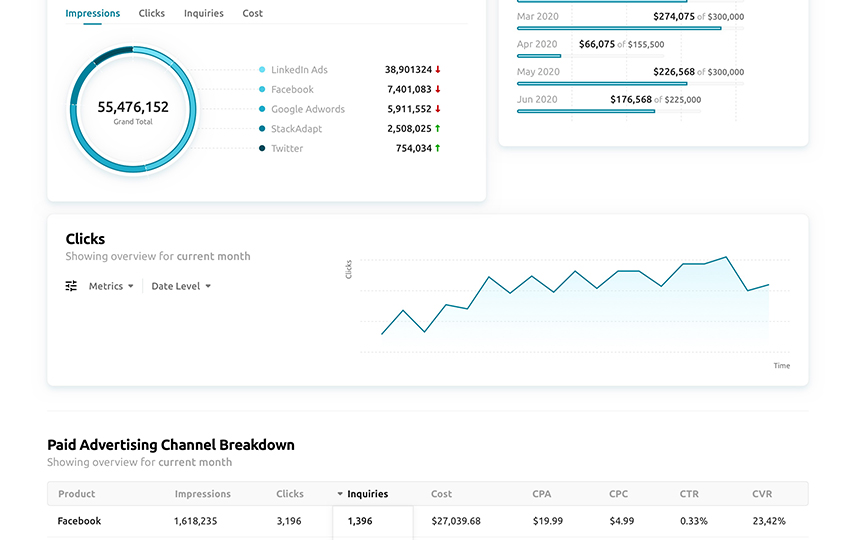
Services: Data Strategy & Pipelines , Reporting, Analytics & Visualization , Technology Assessments
At a Glance
A world leader in energy-based aesthetic and medical treatment systems worked with Convertiv to develop a first-party data strategy and pipeline. This allowed them to be first in line to collect, own, and govern data generated by their products, systems, and digital experiences. By collecting and storing raw event data at every user touch point, they are now able to model and construct custom reports and answer key business questions as they arise.

Our client has countless user touch points across their corporate website, patient microsites, partner portal, and webstore. Historically, data had been siloed or even absent within any given property, preventing visibility into the full user journey. This, in turn, made it very difficult to gain a comprehensive view of the customer lifecycle and answer key business questions, such as whether partner portal activity is indicative of the lifetime value of an existing customer.
Many of our clients face similar situations. Often, disparate reporting structures with different methods of data collection lead to different answers to the same question. Our recommendation of a first-party data strategy alleviates this by collecting as much data as possible and consolidating reporting outputs into a sensible “single source of truth” that isn’t beholden to third-party software restrictions.
Convertiv started the process by standing up a system that could collect all of the data we needed to inform the key business decisions dictated by the client. This involved mapping out every action a user could take across all of the client’s web properties to ensure that all necessary data points were captured. This included actions such as page views, video views, provider searches, partner portal logins, and form fills. We then used Snowplow to send all of this generated data to a data warehouse. When data began flowing, we layered in data modeling to utilize user ID tagging, linking actions from across multiple properties and visits to a single user.
Convertiv built a functional data pipeline that collects thousands of data points per day. By bringing all of this data into one place, we have eliminated the need for reporting to exist in four locations. Now that the client owns their data in a data warehouse, they can manipulate and customize their reports to answer questions from different teams as they arise.
reduced cloud costs
system uptime
It’s never been more important for companies to make strategic and holistic decisions about how they collect, store, and process data. But too ofte...